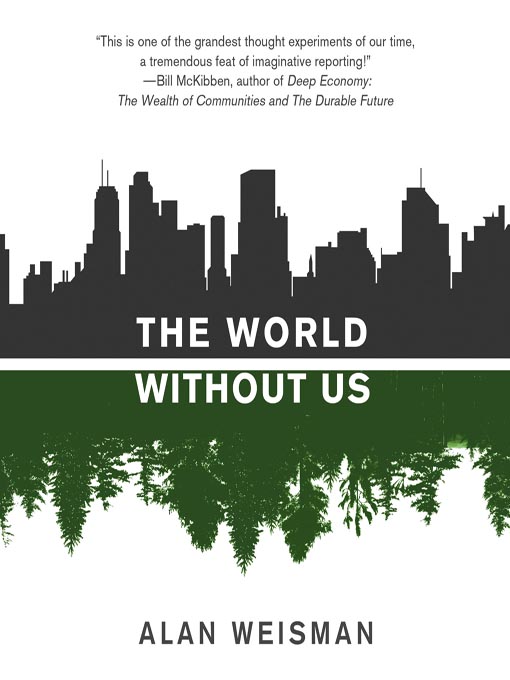Alan Weisman, The World Without Us
reviewed by Danielle L. Parker
 The World Without Us
The World Without Us
Publisher: Thomas Dunne Books, 2007
Length: 324 pages
ISBN-13: 978-0-312-34729-1
I was only about eight or nine years old when we came upon one such camp in late afternoon, abandoned on the shores of a quiet lake. The wind whistled gently through holes and gaps in the broken-down structures; on the sandy beach I walked upon, smelling the indescribable scent of the lake-water, a moose had come down to drink and left its broad tracks. Something in the cool sunlight, the wind, the eerie lack of human life among all the decaying works of its hands made so long ago, left me with a feeling I can remember as vividly as hallucination to this day.
Imagine, then, a world without human life. You, the ghost spirit, move over a planet that has only the works of our hands, no longer our living selves. What would this world be like? That is the provocative question that Alan Weisman poses.
Part of this question he answers by examining the world as it once was. The primeval world still exists in a few treasured places, such as Poland’s Puszcza forest. How little man matters to an environment built upon the decay of vegetative matter and the occasional fall of a forest giant. Past geologic eras are also visited: he touches on the overwhelming rule of ice, a hundred thousand years at a time, with the brief interglacial periods such as we now know of an eye-blink twelve to twenty-eight thousand years.
But the past is no real guide to the future. Humanity has changed the planet in ways that will not be easily undone. Plastics, for example: in the chapter “Polymers Are Forever,” Weisman touches on the vexing problem of the most ubiquitous material of the modern age. How long will plastics last? No one really knows for sure, but to quote the author, “polyethylene is not biodegradable in any practical time scale.” Some beaches in the British Isles have proved to be 20% plastics, and the North Pacific Subtropical Gyre, a huge sump the size of Texas lying between Hawaii and California, is now, as the author calls it, the “Great Pacific Garbage Dump”... 90% of which is, of course, plastic. It’s not diamonds that are forever.
Think New York City, that monstrous concrete archipelago, will last forever? The author breaks down just what will fail and when (as well as a disturbing treatise on the death of your house). What about nuclear power plants? If you live in Phoenix, Arizona, pray the electrical grid (and the sewage processing plants that cool the reactor) never fail. The description of what will inexorably happen to the biggest U. S. nuclear plant, the Palo Verde Generating Station north of the city, is enough to make you glad if you aren’t around to see it.
In the meantime, take a look at what really happened in the Zone of Alienation, the 30-kilometer radius around Chernobyl’s ground zero. Birds and animals are thriving... but breeding faster, and dying younger, than the same species outside. Is it Nature’s way of fighting back?
This thought-provoking book covers far too much ground to be addressed effectively in a one-page review. Although Weisman wastes little time speculating on what disaster could eliminate the human species, his speculations could apply equally well to far less catastrophic circumstances. If the power fails, the climate drastically changes, if the whole huge infrastructure we use to support our modern existence weakens and cracks like that neglected bridge in the Twin Cities, the very factors Weisman discusses in this book will come into play. They do not require our complete absence: only our lessening. Can any of us now say that cannot occur?
It is something my nine-year-old brain dimly comprehended, that sunny, windy afternoon. The works we make today, like the rusting implements and falling-down structures of that ghostly mill, may be less permanent than the tracks of a moose on the sand. Truly, if our legacy is no more than physical flesh and its works, then Ozymandias, thy name is Man.
Copyright © 2007 by Danielle L. Parker

